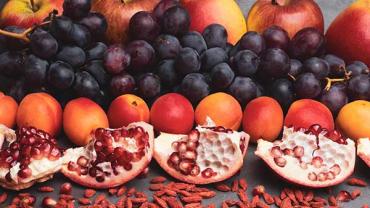
Astaxanthin is a xanthophyll carotenoid found in various microorganisms and marine animals including salmon, trout, krill, shrimp, crayfish, yeast, and the microalgae Haematococcus pluvialis, Chlorella zofingiensis, and Chlorococcum sp. Haematococcus pluvialis is one of the best sources of natural astaxanthin and the most common source for human application.
This red, fat-soluble pigment differs from other carotenoids in that it does not have vitamin A activity; however, it has widely impressive antioxidant power. While astaxanthin is, perhaps, most well-known for its application in eye health, it also shows great promise as nutritional support for cancers, chronic inflammatory diseases, metabolic syndrome, diabetes, diabetic nephropathy, cardiovascular diseases, gastrointestinal diseases, liver diseases, neurodegenerative diseases, eye diseases, skin diseases, exercise-induced fatigue, male infertility, and HgCl₂-induced acute renal failure. In comparison to fish oil, astaxanthin was shown to be superior in its ability to enhance the body’s immune response and lower the risk of vascular and infectious diseases.
A Powerful Antioxidant
Various chronic diseases are rooted in a disproportionate balance of reactive oxygen and nitrogen species to antioxidants, causing destruction of cell membranes, proteins, and DNA. Astaxanthin has been shown to scavenge free radicals more effectively than β-carotene and inhibit lipid peroxidation more robustly than canthaxanthin, β-carotene, or zeaxanthin. When human subjects were given either 2 or 8mg of astaxanthin daily for 8 weeks, DNA damage was mitigated as evidenced by lower plasma 8-hydroxy-2'-deoxyguanosine (8-OHdG) levels.
An Immune Booster
The immunomodulatory effects of astaxanthin aren’t publicized as well as they should be. A randomized double-blind, placebo-controlled study reported that dietary astaxanthin was able to stimulate mitogen-induced lymphocyte proliferation, increase natural killer cell cytotoxicity and the delayed-type hypersensitivity response, and increase the number of total T and B cells in the peripheral blood of subjects receiving 2 mg of astaxanthin daily for 8 weeks. According to in vitro and ex vivo studies, astaxanthin significantly enhanced lymphocyte proliferation, without the risk of cytotoxicity, at high concentrations. In the in vitro models, it increased IFN-γ secretion in LPS-stimulated lymphocytes and in the ex vivo models, astaxanthin (given at doses of 0.28, 1.4 and 7 mg/kg/day for 14 days) stimulated the production of IL-2 and IFN-γ in lymphocytes of mice.
A Glucose and Lipid Controller
Newer research is revealing another unique, but vital role of astaxanthin; namely, its ability to modulate peroxisome proliferator-activated receptors (PPARs). This function may have various applications in human health, including glucose and lipid homeostasis. PPARs are members of the nuclear hormone receptors superfamily that play roles in the expression of many genes regulating cellular differentiation, the metabolism of glucose and lipids, and carcinogenesis. One of the 3 subtypes, PPARα, is primarily expressed in the liver, kidney, heart, and skeletal muscle, where it is involved in lipid metabolism and insulin sensitivity. Another subtype, PPARγ, also plays a role in glucose and lipid homeostasis but its site of action is in the adipose tissue. Astaxanthin is a PPARα agonist, but can act as either an agonist or antagonist to the PPARγ receptor, based on the biological context.
As a PPARα agonist and PPARγ antagonist, astaxanthin has been shown to decrease cholesterol and triglycerides in lipid-loaded HepG2 cells and change the expression of several enzymes involved in lipid and glucose metabolism pathways, resulting in hypolipidemic effects.
An Exercise Enhancer
Another lesser-known application of astaxanthin is for the prevention of exercise-induced free radical production, which not only enhances exercise performance, but also improves recovery. The increase in reactive oxygen and nitrogen species (RONS) produced during exercise is deleterious to health and often combated with a matching increase in endogenous antioxidant enzymes. Excessive exercise, however, can cause RONS to rise above the body’s natural capacity to eliminate them, increasing the risk for oxidative damage in lipid, protein, and DNA molecules. In a review of the ability of astaxanthin to squelch the RONS generated during exercise, it was reported that the antioxidant effects of dietary astaxanthin showed various benefits to athletes. It indirectly improved fatty acid oxidation, which preserved muscle and liver glycogen, prolonging endurance and delaying fatigue. The same review reported that in vitro research and in vivo mouse studies showed dose-dependent inhibition of intracellular RONS and various inflammatory markers following astaxanthin administration. This effect may delay muscle damage and promote recovery.
As an immunomodulatory agent, antioxidant, and metabolic regulator, astaxanthin has the ability to support numerous biological pathways that are involved in a variety of chronic diseases and illnesses. Not only are its applications useful in a therapeutic realm, but this powerful nutraceutical is an excellent addition to a healthy supplement regimen to aid in supporting general health and well-being.